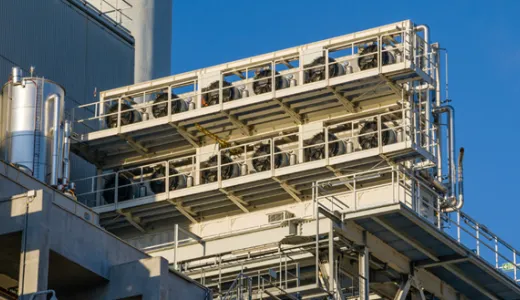What are greenhouse gases?
Greenhouse gases (also known as GHGs) are gases in the earth’s atmosphere that trap heat.
During the day, the sun shines through the atmosphere, warming the earth’s surface. At night the earth's surface cools, releasing heat back into the air. But some of the heat is trapped by the greenhouse gases in the atmosphere. That's what keeps the earth’s temperature at an average 14˚C (57˚F).
Greenhouse gases and the greenhouse effect
The gases act like the glass walls of a greenhouse – hence the name, greenhouse gases. Without this greenhouse effect, temperatures would drop to as low as -18˚C (-0.4˚F); too cold to sustain life on earth.
But human activities are changing earth's natural greenhouse effect with a dramatic increase in the release of greenhouse gases. Scientists agree greenhouse gases are the cause of global warming and climate change.
Since the Industrial Revolution, humans have been releasing larger quantities of greenhouse gases into the atmosphere. In the past century that amount has increased dramatically, with the knock-on effect of global warming. Global temperatures have accelerated in the past 30 years and are now the highest since records began.
What are the main greenhouse gases?

Carbon dioxide (CO2)
CO2 is released through natural processes, such as volcanic eruptions, plant respiration and animals and humans breathing. But the atmospheric CO2 concentration has increased by 50% since the Industrial Revolution began in the 1800s, due to human activities like the burning of fossil fuels and large-scale deforestation. Due to its abundance, CO2 is the main contributor to climate change.
Methane
Methane is produced naturally through decomposition. But again, human activity has displaced the natural balance. Large amounts of methane are released by cattle farming, landfill waste dumps, rice farming and the traditional production of oil and gas.
Nitrous oxide
Nitrous oxide is produced through the large-scale use of commercial and organic fertilisers, fossil-fuel combustion, nitric-acid production and biomass burning.
Water vapour
Water vapour is the most abundant greenhouse gas. It increases as the earth's atmosphere warms but unlike CO2, which can remain in the earth’s atmosphere for centuries, water vapour persists for only a few days.
Natural and man-made GHGs
The group of gases detailed above are naturally produced, but their increasing atmospheric concentration is man-made.
In contrast, the three industrial fluorinated gases – hydrofluorocarbons (HFC), perfluorocarbons (PFC) and sulphur hexafluoride (SF6) – are solely man-made during industrial processes and do not occur in nature. Though they are present in very small concentrations in the atmosphere, they trap heat very effectively, meaning they are extremely potent.
SF6, which is used in high-voltage electricity equipment, has a ‘Global Warming Potential’ 23,000 times greater than CO2.
What can be done to reduce greenhouse gases?
Greenhouse gases can be reduced by phasing out fossil fuels, such as coal, oil and gas, and moving to renewable energy, such as solar and wind.
We can all play a part in protecting our planet, from simple daily changes, like reusing and recycling, to bigger lifestyle decisions like switching to electric vehicles.
What are we doing to reduce greenhouse gases at National Grid?
We're committed to achieving net zero by 2050. Helping society to decarbonise is the biggest contribution we can make to the environment.
This means working towards the connection of low-carbon, renewable energy sources across the UK and US, and achieving the technical capability of operating a zero-carbon electricity system.
We've made a lot of progress, but there's much more we can do. We believe we have a responsibility to lead the way and help drive emissions down across the energy sector - and we have a strategy to do this.
Our Climate Transition Plan outlines some of the key near-term actions we're undertaking to reach our GHG reduction targets.

Why is net zero important?
Net zero is important as it’s the best way we can tackle climate change by reducing global warming. What we do in the next decade to limit emissions will be critical to the future, which is why every country, sector, industry and each one of us must work together to find ways to cut the carbon we produce.



